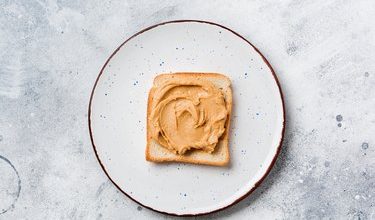How Much Weight Can You Really Lose in 2 Days?

PeopleImages/E+/GettyImages
Pop “how to lose 5 pounds in two days” into your search engine and your results are likely to include laxative and diuretic supplements, sauna sweat plans and herb-infused “cleansing” drinks. The bad news? None of these are safe or effective weight-loss solutions.
The truth is, if you’re doing it the right way, dropping those unwanted pounds can and should take time.
Video of the Day
Video of the Day
But while you may not be able to lose 5 or 10 pounds in two or even three days, there are some lifestyle changes you can introduce that will make a big difference in how you look and feel.
Water Weight Loss vs. Fat Loss
Maybe you’ve seen magazine headlines claiming you can lose 10 pounds in two days, guaranteed, or promising some other lightning-fast weight-loss goal. Before you put any stock in that, it’s important to understand the difference between losing water weight and losing fat.
Water weight refers to the fluid that naturally collects in your tissues. If you change your eating habits and notice the scale drop by a few pounds in a matter of days, you’ve likely just lost some water weight, according to the Mayo Clinic. While losing water weight isn’t necessarily dangerous in the short term, it’s also only temporary and will come back as soon as you begin eating normally again.
Instead, prioritize losing fat by creating a safe calorie deficit and introducing exercise. It’s a slower process, sure, but it’s a formula that can help you stay trim in the long run.
Create Your Personal Calorie Deficit
The rate and overall progress of your fat loss is determined by your calorie deficit (when you burn more calories than you eat). In order to create a healthy calorie deficit, though, you need to first find out how many calories to eat each day to maintain your current weight, according to the American Heart Association.
In order to find your daily calorie maintenance level, you can use a tracking app to log the food you eat. After closely logging your food intake for a few days, you can then cut anywhere between 500 to 1,000 calories each day in order to create a deficit, according to the Mayo Clinic. Because a pound of fat has 3,500 calories, you could expect to lose 1 to 2 pounds per week, respectively.
If you want to slim down and keep it off, though, you’ll need to personalize your deficit. A sustainable diet shouldn’t leave your stomach growling or energy dipping. So, if you try cutting 800 calories per day but feel sluggish and hungry, you may want to increase your intake a bit. Don’t be discouraged if your initial calorie cut is too much to handle.
Stock Up on Nutrient-Dense Foods
The food you put into your body is just as important as the energy you expend, especially if speedier weight loss is your goal. Cutting calories is never an easy process, but that doesn’t mean you should feel hungry all day. Swapping processed, packaged eats with more nutrient-dense whole foods will help keep you satisfied, according to the Mayo Clinic.
Introduce more protein into your diet to avoid a grumbling tummy, per the Harvard Health Publishing. Protein takes longer for your body to burn and absorb, so it keeps you feeling full. Add lean proteins like chicken, turkey or fish and supplement with high-protein snacks like low-fat cottage cheese or yogurt.
As you build your daily weight-loss menu, look for opportunities to add more fibrous foods. Fiber is a nutrient that takes time to digest, slowing the passage of food through your body and keeping you fuller longer, according to the Academy of Nutrition and Dietetics. Plus, it helps keep your bowel movements regular. Foods like leafy vegetables and beans are low in calories and have plenty of fiber.
Increase Exercise to Rev Your Metabolism
You’re probably no stranger to the word “metabolism” and may generally understand the meaning. Your metabolism is the process by which your body exerts energy and burns calories, according to Harvard Health Publishing. The speed of your metabolism is largely determined by genetics and age, but your body composition (your ratio of fat to muscle) can play a role in your basal metabolic rate (BMR), too.
Increasing your body’s muscle mass can help support your BMR, as muscle burns more calories at rest than fat, according to Harvard Health Publishing. Introducing more exercise into your current routine (or tweaking your form of exercise) will help you build muscle. This can be done with a combination of strength and cardio training.
When it comes to your cardio, consider swapping your steady-state exercise, like jogging or walking, for high intensity interval training (HIIT). HIIT involves alternating between intervals of intense exercise (think breathless level) and recovery (conversational pace). This form of training can keep your metabolism high for as long as a full day post-exercise, according to Harvard Health Publishing.
Supplement your HIIT with strength training in the weight room to build some lean muscle. In order to keep your muscles growing and developing, implement progressive overload into your weight training, recommends the National Academy of Sports Medicine. Each week, gradually add more weight to your exercises to keep your muscles growing.
The Bottom Line
In a nutshell, sustainable weight loss is a slow process and requires a lot of patience. Don’t lose momentum if you don’t see the number on the scale drop in just a few days. Adding more nutritious food choices and regular exercise to your daily routine will help you reach a healthy weight — and actually keep it off.




